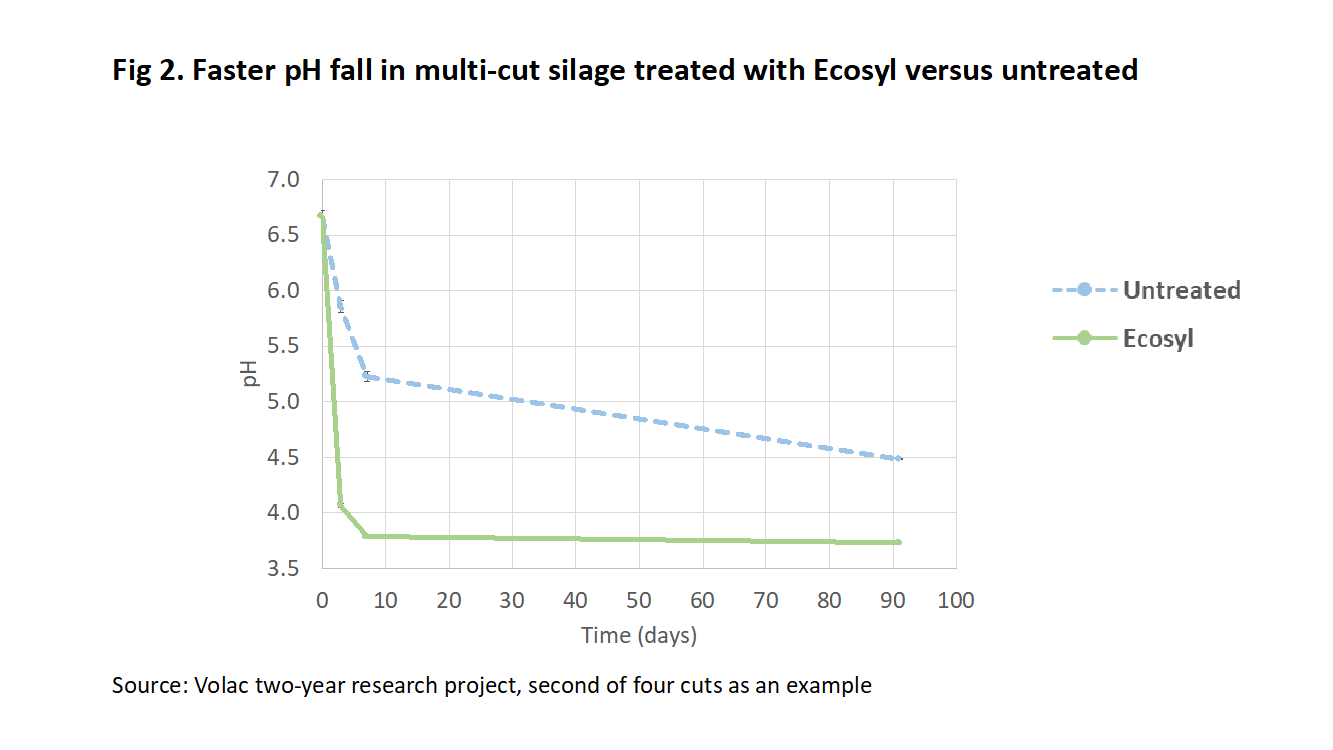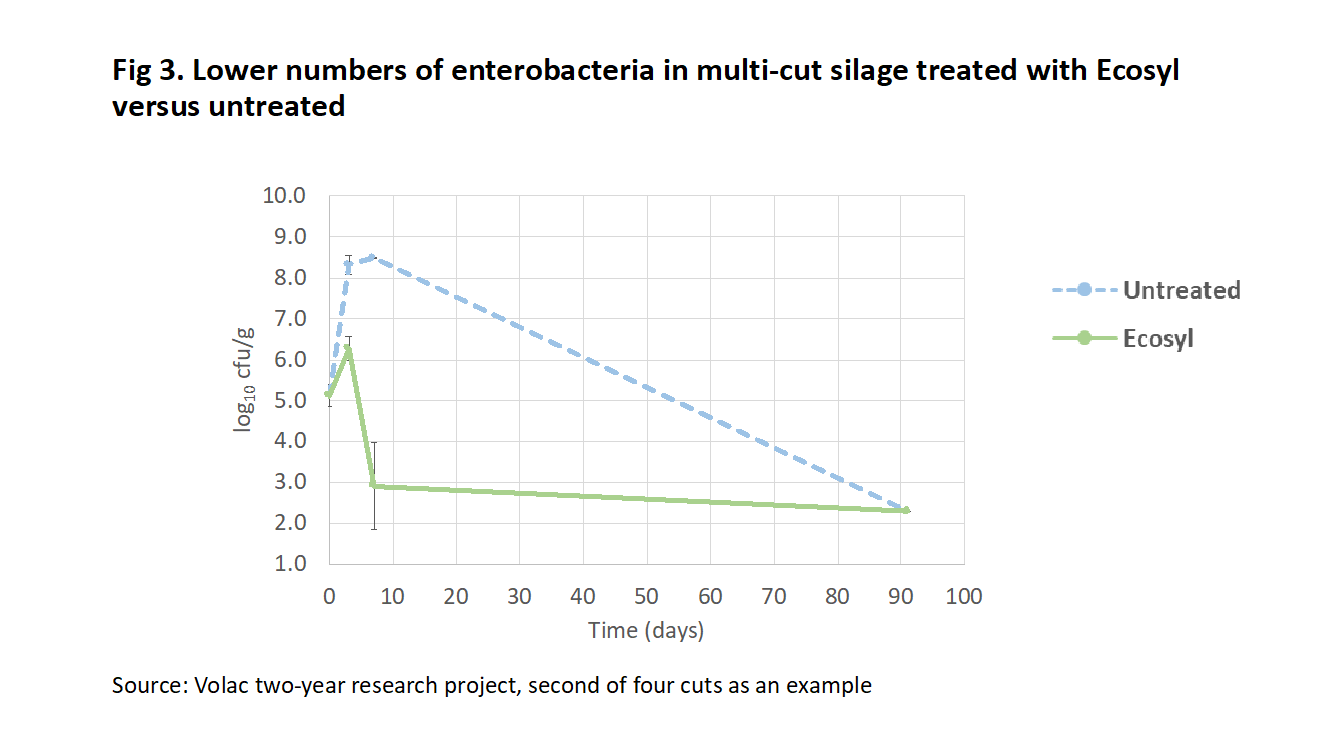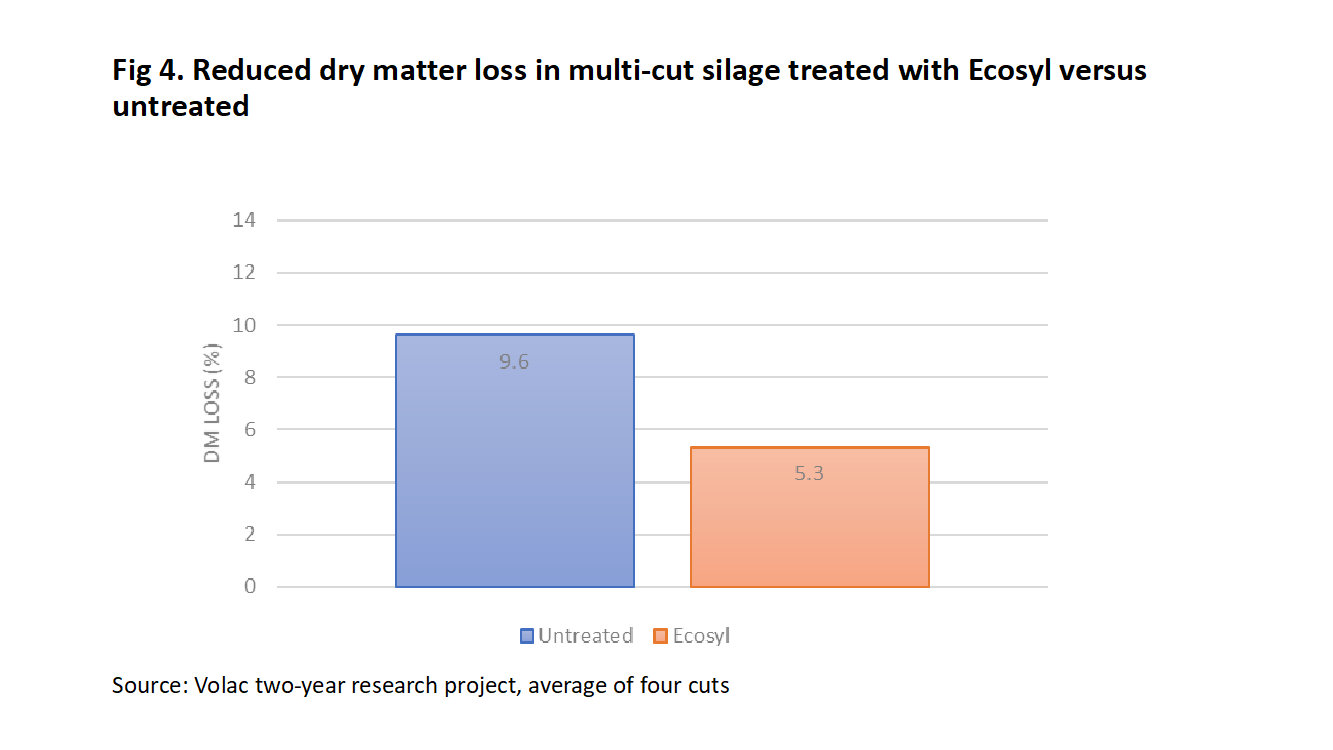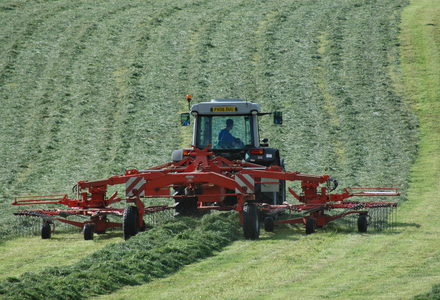Want more milk from homegrown feed?
27 April 2020
Want more milk from your homegrown feed? Then maximising the energy in your grass is crucial. New research is pointing the way and our latest initiative, Grow More Milk, is aimed at helping you to ‘lock in’ as much nutritional value as possible when you turn your grass. into silage.
Find out more and sign up to our e newsletter today for expert advice straight to your inbox.
_original.jpg?1587966548)
A key foundation for milk production is the amount of metabolisable energy (ME) available to the cow, says Volac silage scientist, Philip Jones.
Indeed, there is a relationship that says it takes about 5.3 mega joules of ME for her to produce 1 litre of milk.
And, if you want to insulate your business against volatile feed prices, then providing as much of this ME as possible from home-produced forage and silage is a ‘no brainer’, he adds.
Here in the UK we are blessed with being able to grow good grass,” says Mr Jones. “So it makes sense to make the most of this asset.
“An interesting way to view this is the amount of ME you can make available from your grass per hectare.
We know that new leys are more productive than old ones. But in addition to growing nutritious grass, with silage generally fed for half the year, it is also important to ‘lock-in’ as much of this nutritional value as possible when turning it into silage.
Improving silage
Achieving this is a multi-stage process, says Mr Jones which is what Cut to Clamp is all about, offering expert advice and practical tips on the 6 key stages of grass silage production; Cutting, Wilting, Harvesting, Treating, Clamping and Feeding.
Our latest Grow More Milk initiative is aimed specifically at helping you to ‘lock in’ as much of its nutritional value as possible when you turn it into silage. That way, more of its dry matter and nutrients are available to produce milk.
In particular, two steps attracting increased interest for improving silage are cutting grass at the optimum growth stage and including a proven additive as an integral part of the conservation.
Elaborating on these, Mr Jones says if cutting is delayed until after heading, the digestibility of grass – which determines its ME – falls by 0.5% per day.
Similarly, animal feeding trials have shown that conserving silage with Ecosyl additive has significantly improved ME – from 10.6 to 11.2 MJ/kg DM. Indeed, further research showed that feeding silage preserved with Ecosyl also led to cows producing an extra 1.2 litres of milk/cow/day.
Now, this latest Volac research has taken this a step further by focusing on the progressive technique of cutting grass younger and taking more cuts per season using a multi-cut system, as well as on conserving this potentially high quality forage.
Theoretically, we know that multi-cut silage should offer several nutritional advantages,” explains Mr Jones. “As well as being higher in protein, younger grass should also be more digestible, and therefore naturally higher in ME.
Accordingly, this latest two-year research project, which was conducted in a real farm situation, examined these quality parameters. By measuring yield, we were then also able to derive a figure for how much extra ME/ha the multi-cut system could potentially deliver.
Average digestibility from the multi-cut was 3 D units higher, at 72.7 versus 69.7, which equated to it delivering an extra 0.5 MJ/kg of ME. In addition, crude protein content was also almost 3% higher, at 16.7% versus 13.9%.
Pointing to the findings, Mr Jones says fresh grass from the five-cut, multi-cut system was clearly of higher nutritional quality than from the more conventional three-cut approach.
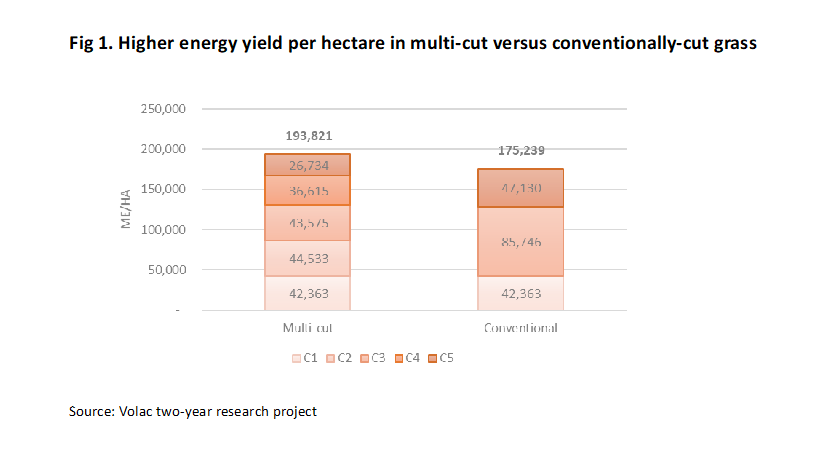
Average digestibility from the multi-cut was 3 D units higher, at 72.7 versus 69.7, which equated to it delivering an extra 0.5 MJ/kg of ME. In addition, crude protein content was also almost 3% higher, at 16.7% versus 13.9%.
Mr Jones continues:
“When overall yield was measured, we found that five cuts also delivered an extra 0.92 t/ha of dry matter in total, with a DM yield of 16.92 t/ha.
“When this extra 0.92 t/ha of DM was multiplied by its higher energy content, this was equivalent to it providing an extra 18,582 MJ/ha of energy over the season.
If you take 5.3 MJ of energy being required to produce 1 litre of milk, this means the multi-cut had the potential to deliver an additional 3,506 l/ha. Even after subtracting the extra contractor costs, if you take milk at 25 pence/litre this, this would still leave you about £333/ha better off.
Find out more about our latest research.
Improving preservation
As well as demonstrating the extra energy potential of the fresh multi-cut grass, the new research also showed shed light on improving its preservation, says Mr Jones.
While the higher protein content of multi-cut is a benefit, nutritionally, it can also contribute to buffering of the fermentation. In addition, shorter intervals between cuts means less time for slurry to dissipate before the next cut is taken, which increases the risk of slurry bacteria in the silage. The combination of high buffering and the action of slurry bacteria can lead to DM losses.
Mr Jones says: “With these challenges in mind, a further part of the research examined how these might be mitigated, by comparing how the fermentation proceeded in multi-cut samples without an additive, versus where Ecosyl was used.
Results showed that not only was the fermentation slow without the additive, with pH levels never reaching those achieved in the treated silage even 90 days after ensiling, but there was also a big increase in enterobacteria numbers, the bad bacteria often associated with slurry, where no additive was used. Ultimately, nearly 10% of the DM was lost across all cuts of the untreated silage, and there was evidence of protein being broken down.
Where Ecosyl was used, not only was the fermentation faster, with the pH falling rapidly – which is key for inhibiting bad bacteria – but enterobacteria numbers were between 100 and 100,000 times lower, and the average DM loss was almost halved. There was also evidence of better preservation of protein,” he says.
In summary, it was clear that multi-cut grass offers the potential to ‘grow more milk’ by providing a higher output of ME/ha, but it does need conserving properly, and treating with Ecosyl certainly helped to achieve that, Mr Jones concludes.
Grow more milk is a new initiative from Volac aimed at helping you to ‘lock in’ as much of its nutritional value as possible when you turn it into silage. Our best practice advice and 5 simple steps an support you to increase the amount of milk you produce from your own silage and reduce your reliance on bought-in feeds.
Find out more and sign up today.
